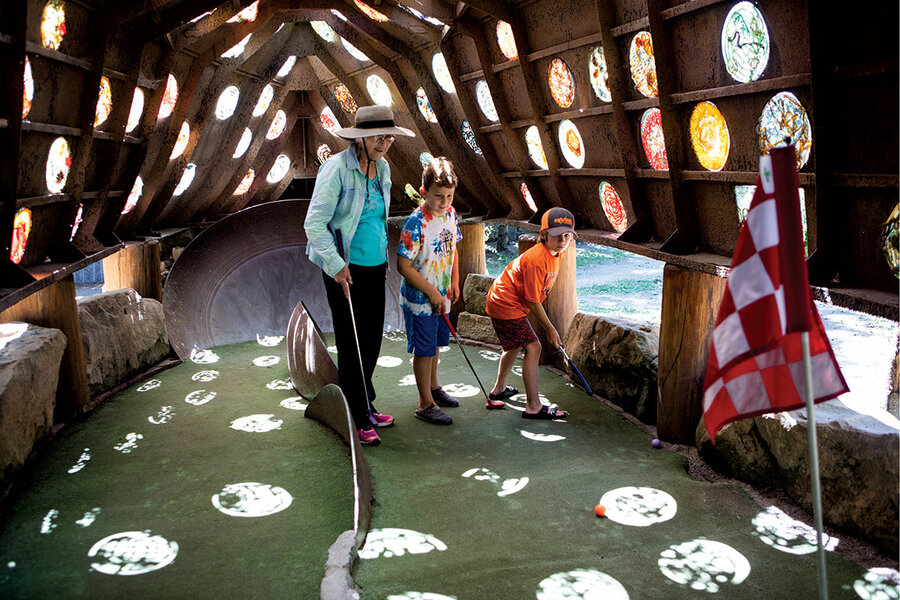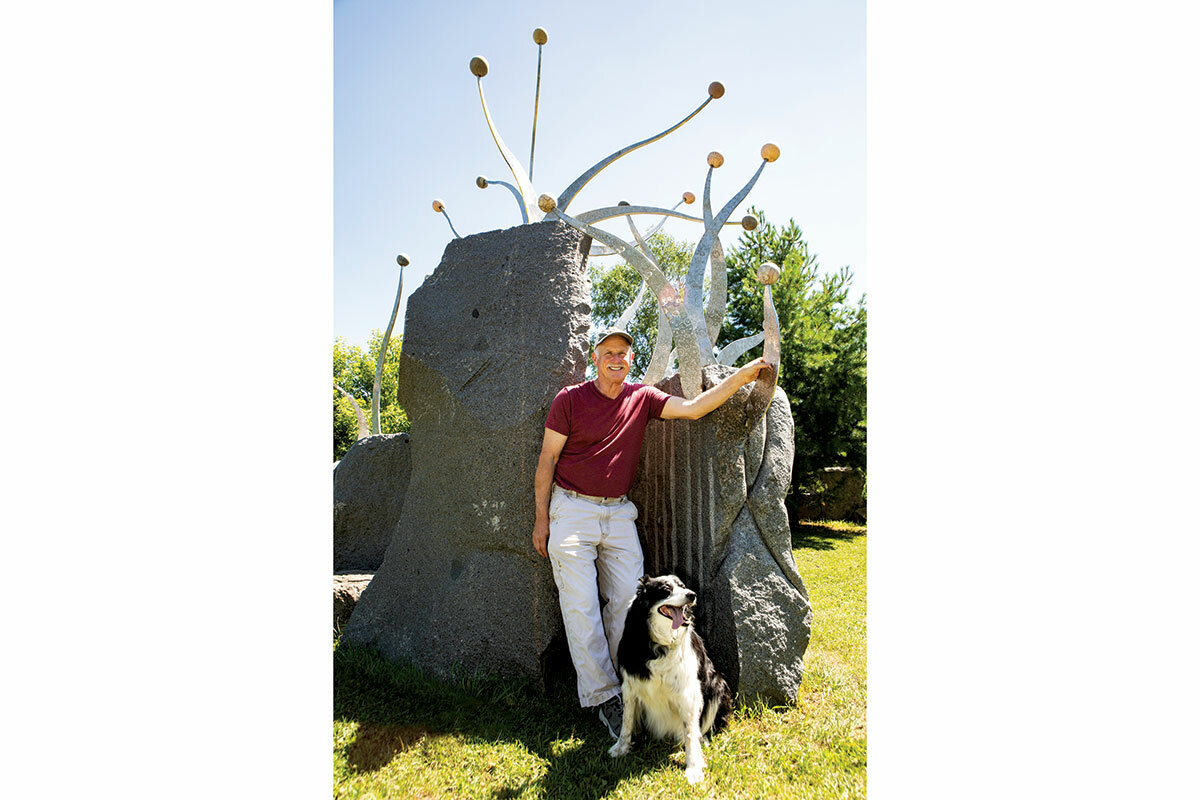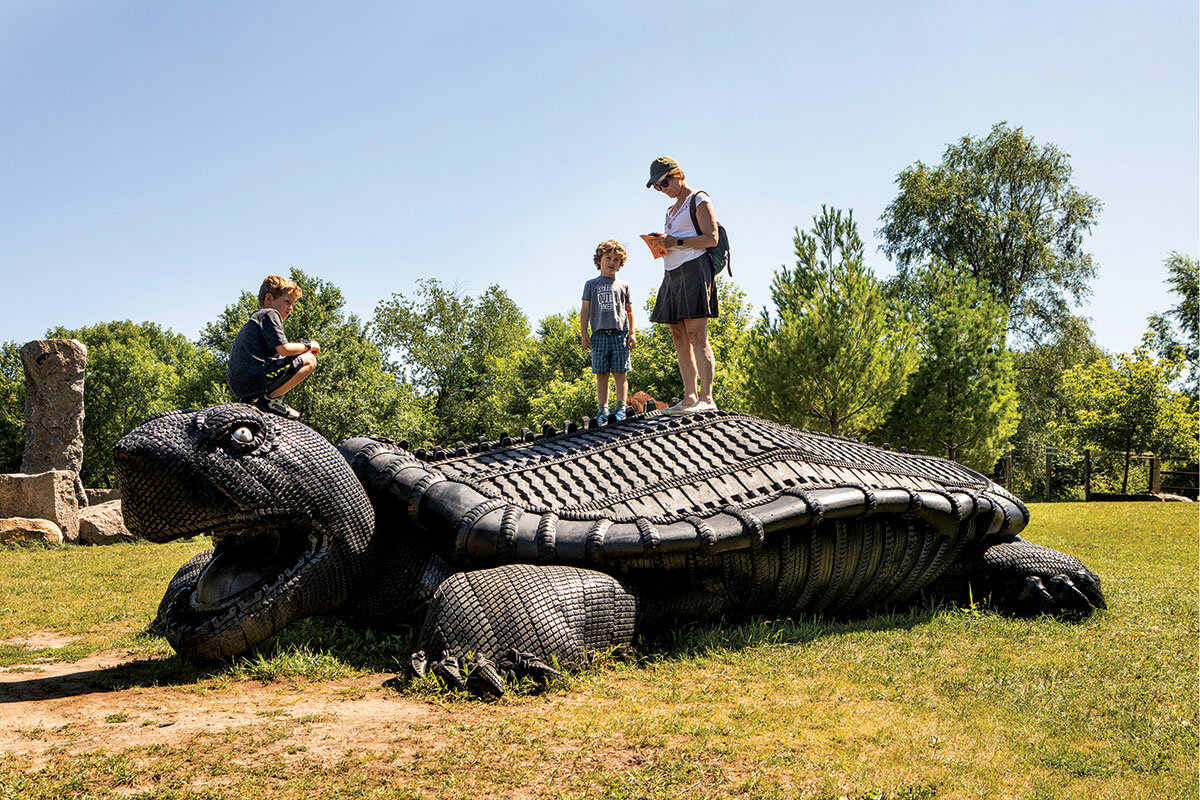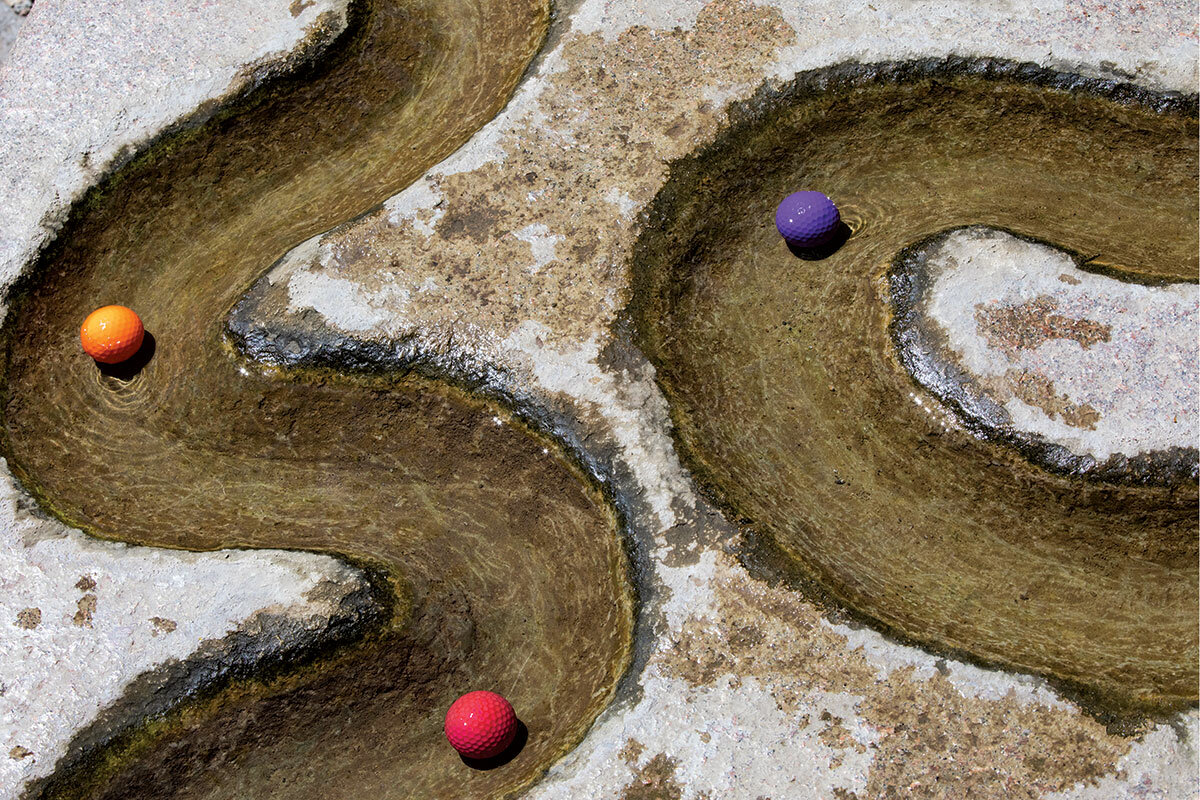In Pictures: Where sculpture meets mini golf
Loading...
| Minnetrista, Minn.
As most golfers know, sometimes it’s about the golf, and sometimes it’s about the course. But can it also be about the art? The creator of Big Stone Mini Golf and Sculpture Garden hopes so.
On a sunny summer day, putt-putters are lined up on the first tee, at a sculpture called Dead Tree Forest, which has artful trees and stumps blocking the way to the hole. It’s clear no one is getting a hole-in-one here, but players don’t seem to mind.
Most of the enjoyment of mini golf is the challenge of impossible obstacles. Here, part of the fun comes just from looking at the obstacles themselves.
Why We Wrote This
A story focused onWho says the masses don’t like art? In Minnesota, Bruce Stillman finds a creative way to spread public joy through whimsical sculpture.
They’re from the mind of artist Bruce Stillman, who originally specialized in kinetic sculpture. He constructed the course on his 17-acre property to attract people to an adjoining sculpture garden that features his own work plus that of 16 other artists and counting.
“Most people aren’t cultured to look at art, but they like games,” he says. His 14-hole putt-putt course displays his imagination and his love of what he calls “landscape sculpture.” Mr. Stillman says, “I like working with nature. ... Nature is the best artist.”
Guests are encouraged to wander the sculpture garden before or after a round of golf, where they might encounter one of the goats or chickens that live on the property. The proceeds from mini golf are used to buy more sculpture and support local art projects.
Lou Gengenbach and her grandsons are marveling at the ingenuity of each hole as her husband, Burle, keeps score. “There’s something to look at at every turn,” she says. “Such creativity. I’m glad other people have it so I can enjoy it!”











